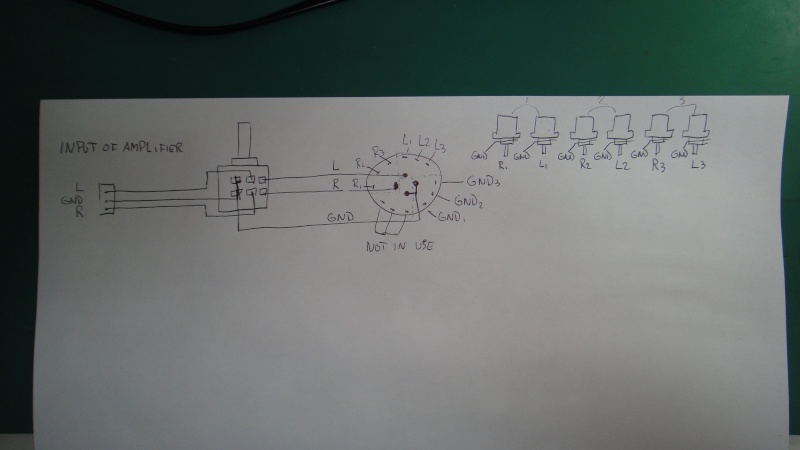thanks for the reply, but imagine you're trying to explain it to a child. i presume its not like a dimmer switch on a light.
thanks for the reply, but imagine you're trying to explain it to a child. i presume its not like a dimmer switch on a light.
actually it's exactly like one.
3 wires from the amp - left right and ground - go to the volume pot - another 3 wires go from the pot to your input (RCA) left right and ground.
pot sits in the middle and controls the level of the signal that reaches the amp (like a tap controlling water)
Hi,
Its the same as a normal amplifier, an attenuator on the input.
rgds, sreten.
(Its not like a dimmer switch at all, in the detail.)
Its the same as a normal amplifier, an attenuator on the input.
rgds, sreten.
(Its not like a dimmer switch at all, in the detail.)
Last edited:
so it controls the actual input signal, not the output to the drivers?
logically as it sits between the line in and the line to the amp; but this then has a knock on effect to the output on the drivers. The amp provides the drivers with a signal and then they draw enough current to produce the sound that matches the signal.
it only gets more complicated as you go into further detail - I tend to work on 'how to I achieve a certain functionality' as opposed to 'how does this work'. Then look at how other people (that know more than me) have achieved the same functionality. I usually then find that the process of reproducing their work teaches me the 'how does it work' part and allows me to start making changes and decisions to how I achieve a similar result.
This approach can work in so many different fields. Nothing teaches you more than having a go and making a mess of it a couple of times.
Depends a little bit on where the volume control is located in the circuit. But basically a volume control (potentiometer) is used as a resistive voltage divider. Imagine 2 resistors in series. One end of the two resistors is connected to the input signal, lets say a preamp. The other end is connected to ground. If the 2 resistors are equal value then 1/2 of the signal voltage will appear from the junction of the 2 resistors and the ground end.
A potentiometer is a variable resistor. To relate to my above example the two 'ends' of the pot are like the two ends of the series resistors. The arm of the pot is like the junction of the 2 resistors. Except that the arm can be moved anywhere between the end connected to signal in and the end connected to ground.
The input of the amplifier is connected to the arm, and the ground of the amp is connected to the ground end of the pot. Thus when the pot arm is at the ground end there is 0 voltage going to the amp input relative to ground. As the pot arm is rotated towards the signal end the voltage to the amp increases and the volume increases. When the arm is all the way at the 'top' end (where the signal from the preamp is connected) the full voltage is delivered to the amp and max volume results.
Sorry if I explained stuff you already knew - it was tough to tell from your original question exactly what you wanted to know.
Rod
A potentiometer is a variable resistor. To relate to my above example the two 'ends' of the pot are like the two ends of the series resistors. The arm of the pot is like the junction of the 2 resistors. Except that the arm can be moved anywhere between the end connected to signal in and the end connected to ground.
The input of the amplifier is connected to the arm, and the ground of the amp is connected to the ground end of the pot. Thus when the pot arm is at the ground end there is 0 voltage going to the amp input relative to ground. As the pot arm is rotated towards the signal end the voltage to the amp increases and the volume increases. When the arm is all the way at the 'top' end (where the signal from the preamp is connected) the full voltage is delivered to the amp and max volume results.
Sorry if I explained stuff you already knew - it was tough to tell from your original question exactly what you wanted to know.
Rod
- Status
- Not open for further replies.
- Home
- Amplifiers
- Class D
- Volume control.
